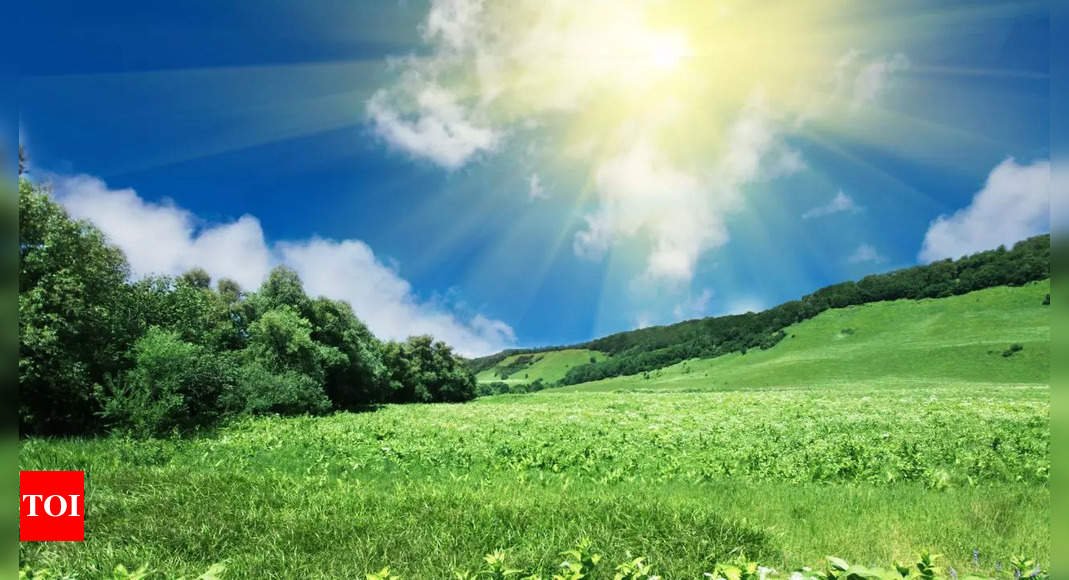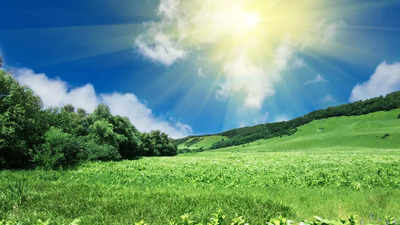As India transitions from January to February, the country is experiencing an unusual weather phenomenon—temperatures resembling early spring rather than winter. The India Meteorological Department (IMD) reported that January 2024 was the third-warmest on record, with an average temperature of 18.9°C. Additionally, it was the fourth-driest January since 1901, indicating a significant reduction in winter rainfall. This pattern of dry and warm weather has raised concerns among meteorologists and climate experts, who suggest that India’s traditional spring season is gradually disappearing.
Historically, March and April have been considered the spring months in India, offering a transition from winter to summer. However, meteorological data and climate studies suggest that February is now experiencing temperature levels once typical of April. Experts warn that these shifting climate patterns are not merely temporary variations but a long-term trend driven by climate change. The impact extends beyond temperature changes, affecting agriculture, biodiversity, and cultural traditions associated with seasonal shifts. If these trends continue, India could face the complete disappearance of its spring season, leading to significant ecological and economic consequences.
Spring season disappearing due to climate change
Climate scientists and meteorologists have observed a steady decline in the duration of India’s spring season. The gradual warming of February temperatures has accelerated, effectively shortening or even eliminating the traditional spring transition. According to Professor Anjal Prakash, research director at the Bharti Institute of Public Policy at the Indian School of Business and an author for the United Nations Intergovernmental Panel on Climate Change (IPCC), the shift in climate patterns is becoming increasingly evident, as reported by The Economic Times.
Professor Prakash warns that the loss of the spring season would have wide-ranging implications beyond just climate change. Agriculture, which relies on predictable weather patterns for sowing and harvesting, could be severely affected. Many crops require specific temperature conditions for growth, and rapid seasonal shifts could lead to lower yields and increased stress on the farming sector. Biodiversity is also at risk, as many plant and animal species rely on seasonal transitions for reproduction and migration. Cultural traditions and festivals that have historically been tied to the arrival of spring may also need to adapt to these changes.
Factors contributing to the disappearance of spring
As per reports, the IMD’s forecast for February predicts below-normal rainfall across most of India, with northern regions experiencing particularly dry conditions. Additionally, both daytime and nighttime temperatures are expected to remain higher than usual, further reinforcing the early arrival of summer-like conditions.
According to Mahesh Palawat, vice-president of meteorology and climate change at Skymet, the diminishing spring season can be attributed to multiple factors, as reported by The Economic Times. Weak Western Disturbances—weather systems that typically bring rain and snowfall to northern India during winter—have been less active this year. As a result, there has been a significant reduction in snowfall across the Himalayas, which usually helps regulate temperatures during early spring. Furthermore, humid and warm winds from the southwest and southeast have blocked the cold northerly winds, causing minimum temperatures to rise above normal levels.
The Himalayan region has been particularly affected, with historically low snowfall levels recorded this winter. Mukhtar Ahmed, director of the regional meteorological center in Srinagar, stated that snowfall has been virtually absent in some areas, and maximum temperatures have remained 6-8°C above normal for the past three weeks. Traditionally, winters in the region lasted from October to March, but recent trends indicate that the winter season is now restricted to just December and January.
Global climate trends and their impact on India
The changes in India’s weather patterns align with broader global climate trends. A report by Climate Central, a European climate research organization, indicates that February temperatures have been rising steadily over the years, leading to abrupt shifts from winter to summer in many regions. The World Meteorological Organization (WMO) has already declared 2024 as the warmest year on record, with global temperatures averaging 1.55°C above pre-industrial levels.
In northern India, the premature end of winter has resulted in a rapid jump to summer-like conditions, bypassing the usual spring transition. This shift has implications not only for daily life but also for agriculture, water resources, and health. Rising temperatures can increase the demand for irrigation, strain water supplies, and heighten the risk of heatwaves, particularly in urban areas where concrete structures retain heat for longer periods.
Rainfall deficit across India
The lack of winter rainfall has further intensified concerns about India’s changing climate. Many parts of the Himalayan region have reported extremely low precipitation levels, contributing to reduced snowfall and worsening the overall water crisis. According to IMD data:
- Uttarakhand has recorded an 86% shortfall in rainfall since January 1.
- Jammu & Kashmir has experienced an 80% rainfall deficit.
- Himachal Pradesh has seen 73% less rainfall than usual.
- Sikkim has faced an 82% shortfall in precipitation.
The rainfall deficit is not limited to the Himalayan region. Most of northwest and eastern India, with the exception of eastern Rajasthan, have experienced below-average precipitation levels this winter. Central India has recorded the most alarming statistics, with a 96% deficit in rainfall during January. This severe lack of moisture not only exacerbates the risk of droughts but also contributes to rising temperatures, as dry soil and reduced vegetation fail to regulate heat effectively.




